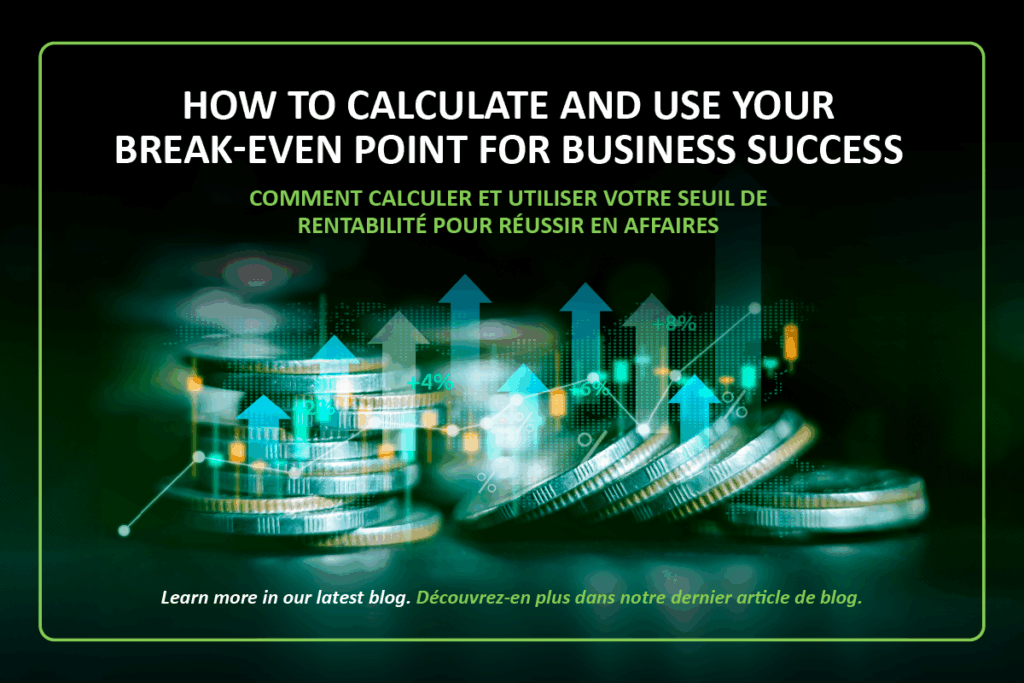In any business, there comes a moment when decisions get real—when the questions shift from “Can we sell it?” to “Can we sustain it?” That’s where the break-even point becomes essential.
Understanding your break-even point isn’t just a finance exercise—it’s a leadership discipline. It’s the line in the sand that reveals whether your business model is viable, your pricing strategy is sound, and your sales targets are realistic. Especially in periods of economic pressure, funding constraints, or market entry, this number can anchor smarter, faster decisions.
What Is the Break-Even Point?
The break-even point identifies the precise moment where total revenue equals total cost—when the business stops bleeding and starts earning. It reflects the minimum performance your business must achieve before generating profit.
It’s calculated in two ways:
- Break-Even Units = Fixed Costs ÷ (Price – Variable Cost per Unit)
- Break-Even Sales = Fixed Costs ÷ Contribution Margin Ratio
(Where Contribution Margin Ratio = (Price – Variable Cost) ÷ Price)
This gives leaders two powerful views: one in units, one in dollars. Both are essential for aligning strategic goals with financial reality.
Why It Matters to Leaders
For executives, the break-even point is a critical planning and risk management tool. It brings clarity to several areas:
- Sales targets: Establish revenue floors required to sustain the business.
- Pricing strategy: Evaluate how price changes, promotions, or discounting affect profitability thresholds.
- Resource planning: Understand the volume required to justify investment in hiring, equipment, or expansion.
- Strategic modeling: Use break-even as a baseline in financial scenarios, investment analysis, and growth plans.
An Illustrative Example
Consider a direct-to-consumer apparel brand with $120,000 in annual fixed costs. Each unit sells for $80 and costs $50 to produce and ship. The $30 contribution margin per unit means:
- Break-Even Units = $120,000 ÷ $30 = 4,000 units
- Break-Even Sales = $320,000
Every unit beyond 4,000 contributes directly to profit. This clarity allows leadership to prioritize high-margin SKUs, adjust marketing ROI expectations, and negotiate vendor terms with confidence.
Industry Benchmarks That Matter
Understanding how your break-even point compares within your sector is critical context:
- Retail & Consumer Goods: Contribution margins typically range from 40% to 60%. Fixed costs can be relatively low if storefronts or warehousing are outsourced.
- Manufacturing: High fixed costs (machinery, labor) and tighter variable margins often push break-even sales significantly higher.
- Technology & SaaS: With fixed R&D and low variable costs, break-even is reached quickly once customer acquisition is optimized.
These industry-specific cost structures shape not just when you break even—but how you build strategy around it.
Strategic Applications for Executive Decision-Making
Break-even analysis is a foundational tool in executive playbooks for:
- Pricing and profit margin reviews
- New product launch modeling
- Investor and board communication
- Scenario planning (e.g., cost inflation, demand volatility)
Used regularly, it ensures that every major decision is grounded in financial truth—not intuition.
What It Doesn’t Tell You
Break-even is powerful, but it doesn’t tell the whole story. It assumes consistent costs, stable pricing, and a single product—rare in practice. It also doesn’t factor in cash flow timing, capital expenditure, or revenue cycles.
To deepen its value, pair break-even analysis with:
- Contribution margin analysis
- Cash flow forecasting
- Scenario stress testing
From Insight to Action
To apply break-even analysis effectively:
- Calculate your break-even point regularly, updating for cost or pricing shifts.
- Benchmark against peers to assess performance and pricing competitiveness.
- Use it to set thresholds in sales, marketing, and operational strategy.
- Revisit it before major investments or strategic pivots.
- Seek expert support to validate assumptions and surface insights.
The Executive Advantage of Knowing Your Break-Even
In today’s business climate, precision matters. The break-even point is not just a number—it’s a strategic lens. It reveals whether your business is priced for sustainability, operating at efficient scale, and on track to generate the value you promise to stakeholders.
Prime Capital helps business leaders move beyond assumptions and into informed action. We bring strategic clarity to financial models—so you can lead with confidence, not guesswork.
Book a call with Prime Capital today to integrate break-even analysis into your strategic decision-making—and make every move grounded, calculated, and clear.




